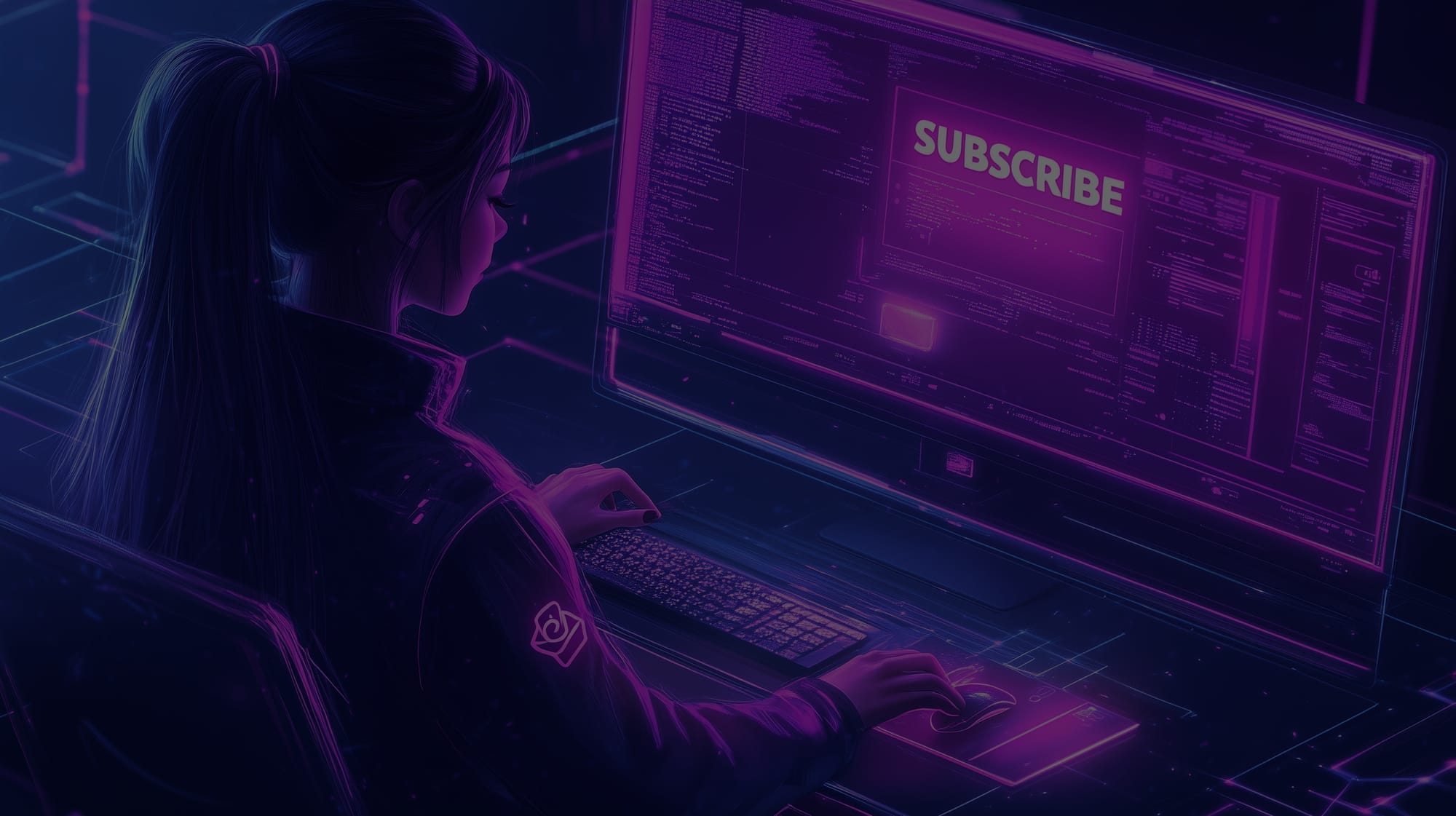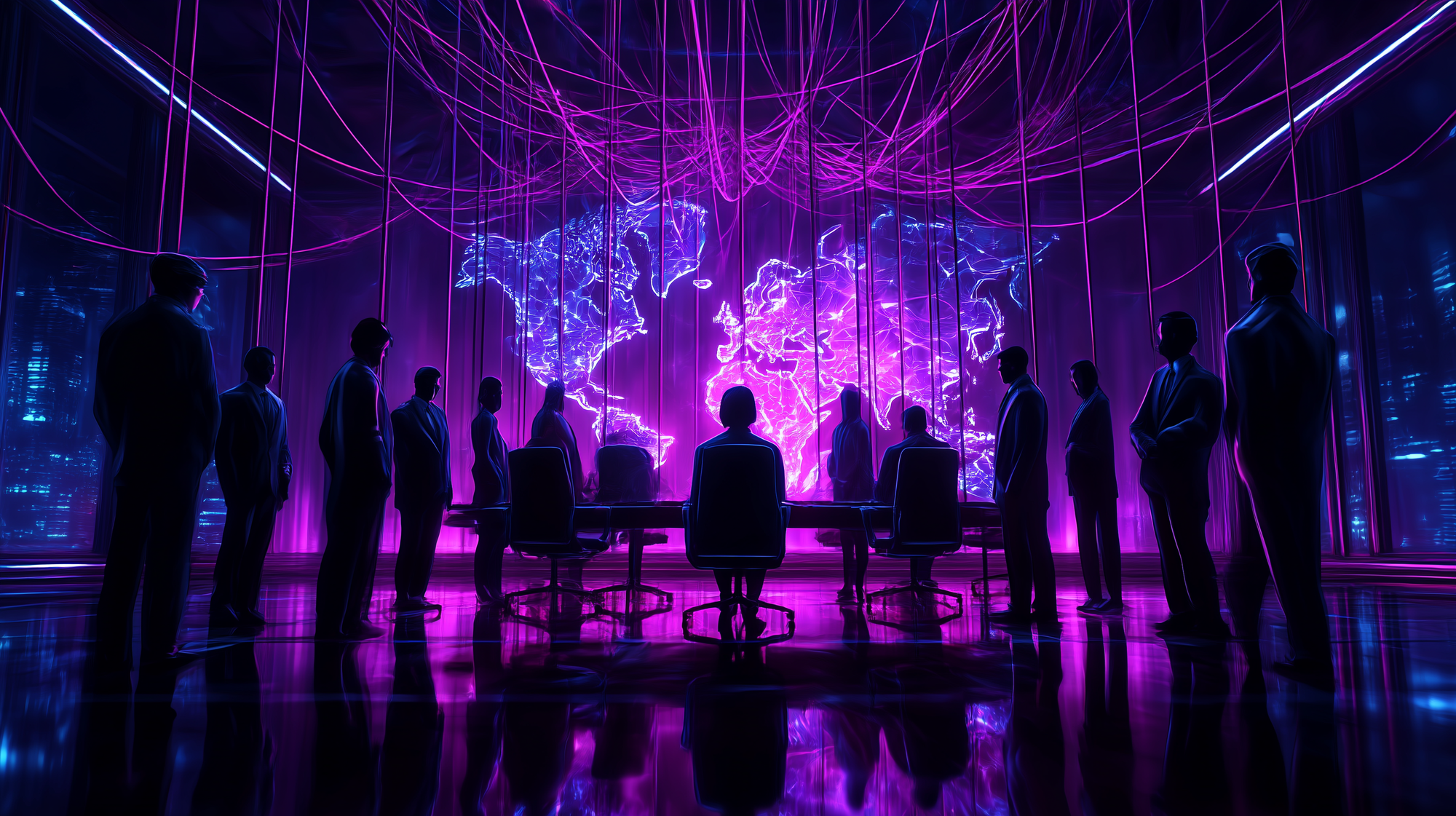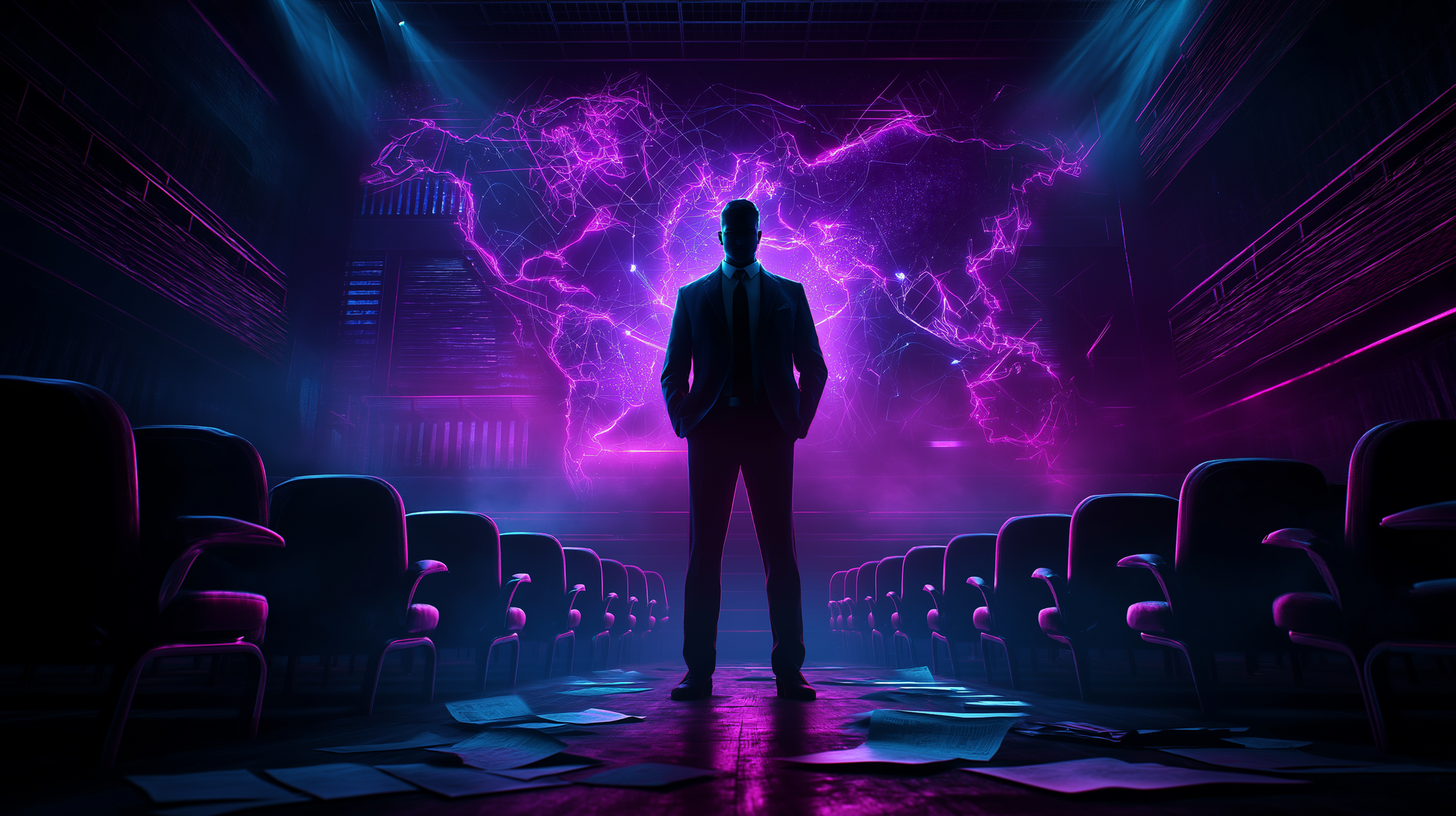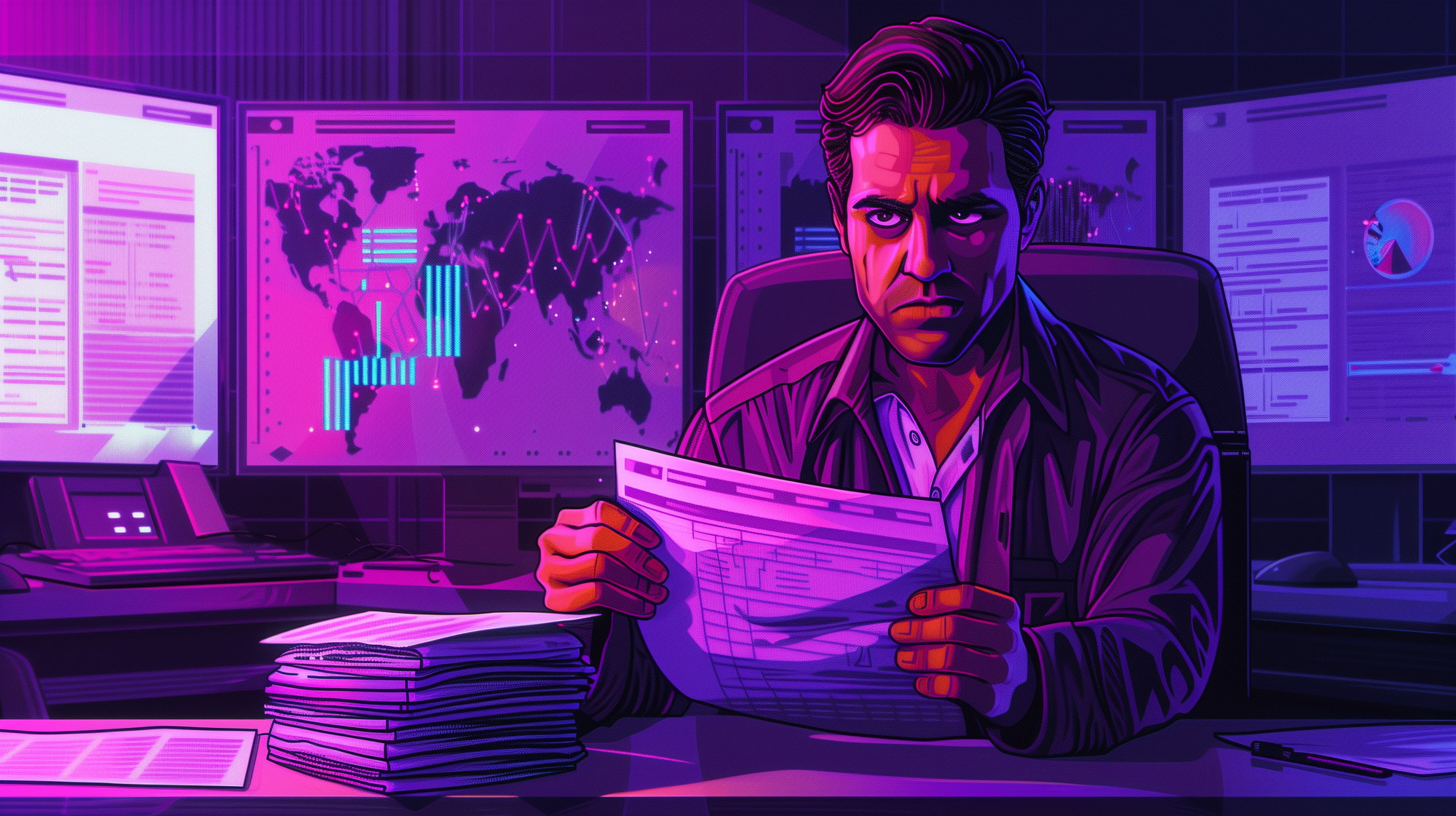
What The Wire and Breaking Bad Expose About Cyber Threat Intelligence
Explore how the complex, systemic world of The Wire and the intense, focused drama of Breaking Bad uncover the deeper truths of cyber threat intelligence. Discover the unexpected parallels revealing the true nature of cyber defense in an increasingly digital battlefield.
I can imagine many reading the title, questioning the connection between The Wire, Breaking Bad, and cyber threat intelligence (CTI). Even I was struck by the audacity of the idea when it first came to me. How could these two seemingly disparate worlds intersect with CTI in any meaningful way? And yet, here we stand, on the precipice of an unusual exploration promising to reveal profound insights where we least expect them.
It may seem like a strange and absurd comparison at first glance. However, I believe these two iconic TV shows offer a compelling lens through which we can explore not only the true power dynamics within CTI, but also the broader perception of this discipline in the marketplace, especially among those who are not traditional CTI practitioners.
Despite the vast literature on cyber security and cyber threat intelligence, I have yet to come across anyone who has drawn these parallels. What this says about me, I am not entirely sure, but I am more than willing to embrace the unconventional and dive headfirst into the proverbial deep end of crazy for what is hopefully an insightful thought experiment.
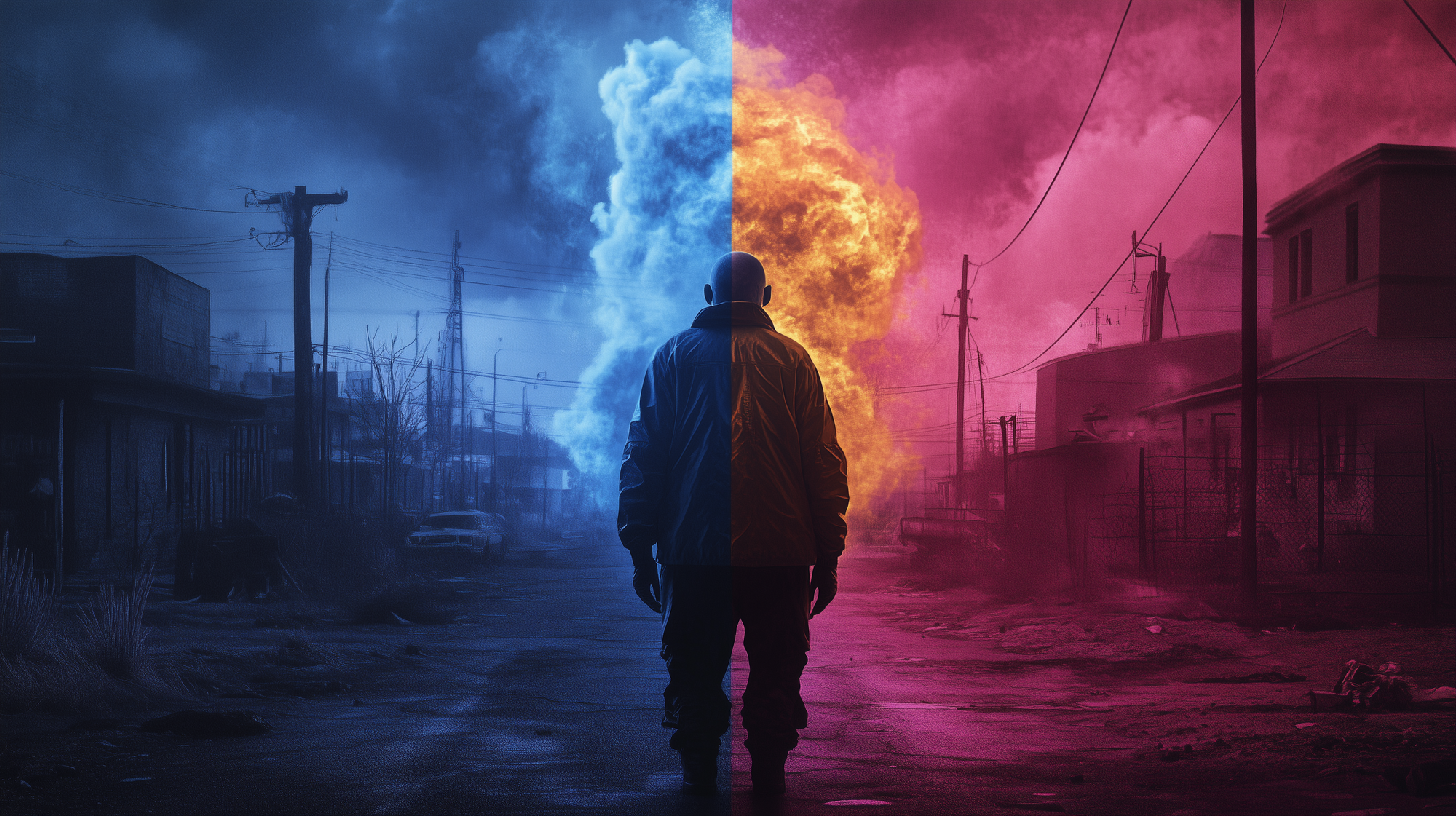
Introduction
In today’s world, many of us are drawn to a select few television shows excelling in immersive world-building and intricate storytelling. Among these, The Wire stands out as one of my personal favorites. I have watched the entire series more times than I can count, and with each viewing, I discover new layers and details previously eluding me. Breaking Bad also holds a special place in my heart, but for entirely different reasons. While both shows are often hailed as masterpieces, they are fundamentally different in their narrative scope, character development, and thematic depth.
The passionate divide among fans of these shows is striking. Although both are frequently cited as some of the greatest television series ever made, they resonate with audiences in distinctly different ways. Breaking Bad tends to captivate a broader audience, likely due to its tighter focus on the personal journey of Walter White and his immediate circle. Its intense, fast-paced drama and clear, singular narrative arc make it more accessible and immediately gratifying.
"I am not in danger, Skyler. I am the danger."
— Walter White
In contrast, The Wire is often perceived as slower and more challenging, with its sprawling cast of characters and complex, interwoven storylines. However, the rewards of watching The Wire are profound. Each season builds a rich tapestry of interconnected narratives, offering a deeply satisfying payoff unmatched by the more straightforward seasonal arcs of Breaking Bad. In many ways, The Wire was a precursor to shows like Game of Thrones, demanding audiences to keep track of multiple characters and plotlines. Its complexity, while daunting to some, is what makes it such a compelling and enduring work of art.
What I have always admired about The Wire is its ability to tell a unified story across five seasons, while simultaneously exploring distinct themes and narratives within each season. It is television at its most complex and sophisticated, and it is not a show easily lending itself to instant adoration. Breaking Bad, on the other hand, is often seen as more immediately engaging, with its portrayal of an ordinary family unraveling due to one man’s desperate decisions. Walter White’s downfall is dramatic and captivating, but it lacks the expansive, multi-layered storytelling making The Wire truly extraordinary.
The Wire appeals to those who appreciate the nuances of storytelling and character development, while Breaking Bad, with its more overt drama and tension, appeals to a wider audience. Yet, beneath the surface, it is The Wire offering the more compelling and thought-provoking narrative.
"The game is rigged, but you cannot lose if you do not play."
— Marla Daniels
So, what does this have to do with Cyber Threat Intelligence (CTI)? Consider this preamble as a metaphor: traditional CTI is The Wire, and dark web monitoring is Breaking Bad.
Traditional CTI, like The Wire, is sophisticated, broad, and deeply interconnected, offering a comprehensive understanding of the cyber threat landscape. It is a complex, systemic approach requiring patience and depth of analysis. Dark web monitoring, akin to Breaking Bad, is intense, focused, and immediately actionable, providing critical insights into specific threats but lacking the broader strategic context.
In the insanely sophisticated battlefield of cyberspace, the strategies we employ to understand and counter threats must be as multifaceted and sophisticated as the adversaries we face. Two contrasting paradigms of cyber threat intelligence stand out, each reflecting different philosophies, methodologies, and goals. These paradigms can be vividly illustrated through the lens of these two iconic television series.
Let us now explore this in more exquisite detail.

The Wire: Sophisticated, Broad, and Deep
The Wire is more than just a crime drama; it is a profound exploration of systems, interconnectedness, and the complex web of societal forces shaping our world. The show’s brilliance lies in its ability to weave together multiple narratives across various seasons, each contributing to a broader understanding of the systemic issues plaguing Baltimore. This intricate, multi-layered storytelling is a powerful metaphor for traditional CTI.
Traditional CTI mirrors the sophistication and depth of The Wire, offering a broad and deep analysis of cyber threats. Just as The Wire delves into the complexities of not only the criminal underworld but also the institutions meant to combat it, CTI does not merely identify threats in isolation. Instead, it seeks to understand how these threats are interconnected, how they interact with geopolitical realities, and how they fit into the broader context of global cyber security, and even national security.
"The thing about the old days: they the old days."
— Slim Charles
For example, in The Wire, Detective Lester Freamon’s ability to follow the money trail and uncover the financial underpinnings of the Barksdale drug operation exemplifies the depth and sophistication required to dismantle a complex adversary. Freamon’s work is slow, methodical, and rooted in a deep understanding of the broader system — exactly how CTI operates when mapping out the operations of Nation State, eCrime, and Hacktivist adversaries. This systemic approach allows for strategic, operational, and tactical insight going beyond the immediate threat, offering a holistic view of the cyber threat landscape.
In The Wire, each subplot contributes to a larger, more profound story about systemic corruption and decay. Similarly, CTI offers a layered view of the threat landscape, where each piece of data, each incident, is part of a broader, more sophisticated picture. This approach allows organizations to not only defend against specific attacks but also to anticipate future threats based on a deep, strategic and operational understanding of the adversary’s broader objectives. The intelligence provided is not just about immediate protection but about long-term security, much like how The Wire’s narrative is about understanding the full scope of the systemic issues it portrays.

Breaking Bad: Intense, Focused, and Singular
In stark contrast, Breaking Bad is an intense and singularly focused narrative. The show is centered around Walter White’s transformation from a high school chemistry teacher to a ruthless drug kingpin. While Breaking Bad is gripping in its storytelling, it is essentially the story of one man’s descent into chaos. The story is a one-trick pony, focused almost entirely on Walter’s journey and the immediate consequences of his actions. This narrow, intense focus reflects the approach of dark web monitoring.
Dark web monitoring is much like Breaking Bad — intense, focused, and centered on immediate, actionable intelligence. Just as Walter White’s transformation into Heisenberg is marked by a singular obsession with power and control, dark web monitoring hones in on the specific threats emerging from the dark web, such as harvested credentials, leaked data, malware sales, and other similar threats. This intelligence is sharp and immediate, targeting vulnerabilities and threats in real-time, much like Walter’s elaborate, yet narrowly focused schemes.
"You know, I’ve done a terrible thing. But I did it for a good reason."
— Walter White
One of the most iconic scenes in Breaking Bad occurs when Walter devises a plan to use a magnet to destroy evidence in a police evidence room. His approach is ingenious but narrowly targeted, addressing only the immediate problem without considering the broader implications. Similarly, dark web monitoring excels at identifying specific, tactical threats, such as harvested credentials being sold on a marketplace or uncovering a supply chain attack due to a post on a ransomware dedicated leak site (DLS), but it is limited by its focus on the immediate and the tactical.
Breaking Bad is intense and compelling, but it ultimately lacks the depth and breadth of The Wire. The show is about the here and now, much like dark web monitoring, which is critical for addressing current threats but lacks the broader, more strategic perspective needed for long-term resilient cyber defense. Walter White’s meticulous planning often overlooks the bigger picture, leading to his empire’s eventual collapse. Similarly, dark web monitoring, while powerful in the moment, leads to strategic vulnerabilities if not complemented by the broader, more sophisticated analysis traditional CTI offers.
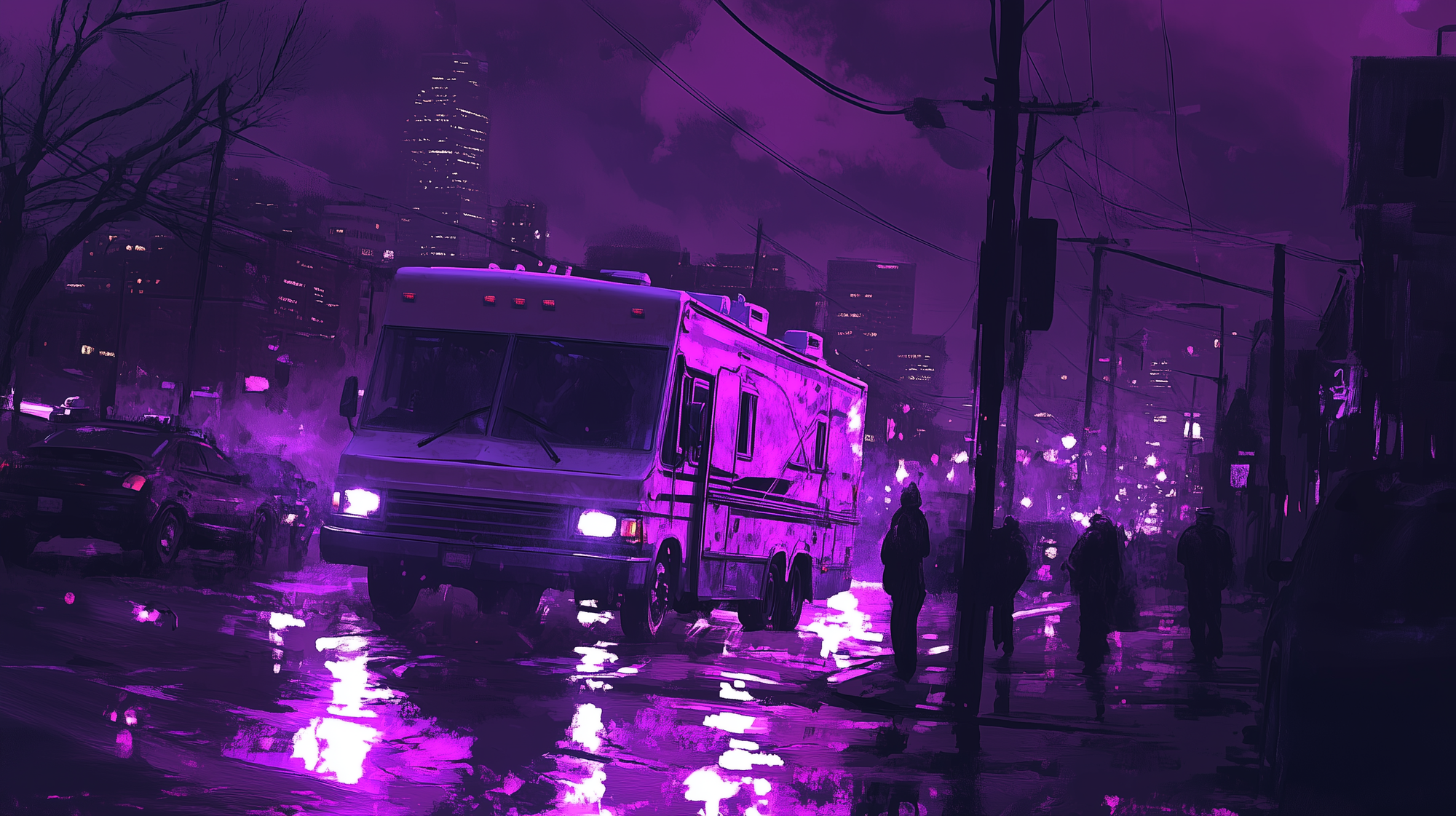
Fusing The Wire and Breaking Bad
Imagine a television series fusing the expansive, deeply interconnected narrative of The Wire with the intense, focused drama of Breaking Bad. This hypothetical show would combine the best of both worlds by melding the sophisticated, systemic exploration of society’s undercurrents with the gripping, high-stakes tension of a singular moral descent. Such a series would be unparalleled, offering a narrative both broad in scope and razor-sharp in its immediacy, resonating with viewers on multiple levels.
This fusion would create a television experience not only captivating but also provoking deeper reflections on the complex interplay of individual actions and systemic forces.
"I’ve made a lot of bad decisions to get me here."
— Jesse Pinkman
Let’s consider some key examples from each show to illustrate this concept. In The Wire, the portrayal of the Baltimore longshoreman’s struggles in Season 2 offers a nuanced exploration of the decline of American industry and the human cost of globalization. This storyline is not just about crime; it delves deep into the socio-economic factors driving individuals into the illegal trade.
The show meticulously builds a complex picture of how systemic failures — economic downturn, political neglect, and union corruption — create an environment where smuggling and organized crime can thrive. This broad, systemic analysis is akin to the traditional CTI approach, where understanding the geopolitical and socio-economic context is crucial to comprehending the motivations and strategies of adversaries.
In contrast, Breaking Bad excels in its portrayal of the immediate, high-stakes consequences of individual decisions. Take, for example, the episode “Ozymandias,” where the culmination of Walter White’s choices leads to the rapid disintegration of his empire. The episode is a masterclass in tension and immediacy, focusing intensely on the fallout from Walter’s actions. This kind of storytelling mirrors the approach of dark web monitoring, zeroing in on the real-time activities of cyber adversaries, capturing the immediate threats and vulnerabilities having instant and significant impacts.
Now, imagine a television series weaving together the broad systemic insights of The Wire with the sharp, real-time focus of Breaking Bad. This fusion would offer viewers a narrative both expansive in its exploration of underlying forces and immediate in its depiction of consequential actions. It would provide a holistic view of how large-scale systemic issues and individual choices interact, creating a rich, multi-layered story resonating on both intellectual and emotional levels.

This fusion of storytelling approaches is an apt metaphor for the integration of traditional CTI with dark web monitoring in cyber security. Traditional CTI, much like The Wire, offers a comprehensive understanding of the broader landscape. It analyzes the geopolitical motives, long-term strategies, and organizational structures of adversaries. For instance, a CTI team might analyze how economic sanctions influence the cyber activities of a Nation State, leading to an uptick in state-sponsored offensive cyber operations as a means of economic warfare. This approach is strategic, offering deep insights into the adversary’s long-term goals and methods.
However, the depth and breadth of traditional CTI can sometimes miss the immediacy of emerging threats. This is where dark web monitoring, akin to the focused intensity of Breaking Bad, plays a critical role. Dark web monitoring provides tactical intelligence by infiltrating hidden online communities where eCrime threat actors operate. For example, dark web monitoring might track the sale of credentials on a marketplace, offering real-time alerts on vulnerabilities that could be exploited in the very near future. This approach is immediate, providing intelligence to prevent or mitigate an imminent attack.
"What’s the matter? You don’t like a little change?"
— Stringer Bell
By fusing these two approaches, just as a combined The Wire and Breaking Bad universe would create a television show of unparalleled depth and immediacy, cyber security professionals must develop a best-of-breed defense strategy. The broad, strategic and operational insights of traditional CTI are enriched by the tactical, real-time intelligence of dark web monitoring. Together, they provide a comprehensive understanding of the threat landscape, from high-level strategies to the immediate, actionable threats emerging from the dark web.
Imagine a scenario where a Nation State adversary is planning a multi-stage cyber attack on critical infrastructure. Traditional CTI would provide a comprehensive analysis of the adversary’s strategic motivations — perhaps linked to geopolitical conflicts or economic sanctions — and identify potential targets based on historical patterns and known capabilities. Additionally, it would offer operational intelligence on the tradecraft this adversary typically employs during their attacks.
The significance of operational intelligence in CTI is profound. A deep comprehension of an adversary’s capabilities and their historical tactics equips organizations with the foresight to build proactive defenses, fundamentally reducing the likelihood of a successful attack. For instance, in this hypothetical, maybe the Nation State adversary is known for consistently employing specific tactics aligned with certain MITRE ATT&CK techniques. Organizations can strategically fortify their defenses by preemptively deploying security controls tailored to counter these threats. This anticipatory approach transforms CTI from a reactive measure into a powerful, proactive force, enhancing the organization’s resilience against sophisticated adversaries.
Simultaneously, dark web monitoring could reveal this Nation State adversary leveraging the eCrime ecosystem to acquire harvested credentials or zero-day exploits marketed specifically for this attack. This real-time intelligence is not just an early warning; it enables the organization to swiftly deploy defensive measures preemptively disrupting the adversary’s plans.
By integrating the strategic and operational foresight of CTI with the tactical immediacy of dark web insights, organizations can shift their security posture from passive defense to active, informed intervention, enabling them to stay ahead of even the most sophisticated threats.
"I got the shotgun. You got the briefcase. It’s all in the game though, right?"
— Omar Little
Just as the fusion of The Wire and Breaking Bad would create a television series both intellectually profound and viscerally compelling, combining traditional CTI with dark web monitoring creates a multi-faceted cyber security strategy cutting across the vital strategic, operational, and tactical layers. This synthesis allows organizations to anticipate and understand complex, long-term threats while also responding effectively to immediate dangers.
It is in this balance, between the systemic and the specific, the strategic, operational, and the tactical, we find the most robust and resilient defense against the highly sophisticated and constantly evolving threats of the digital age. Like a show seamlessly blending the depth of The Wire with the intensity of Breaking Bad, this approach offers a narrative of cyber defense as nuanced as it is powerful, ensuring preparedness and resilience in the face of any modern or future threat.
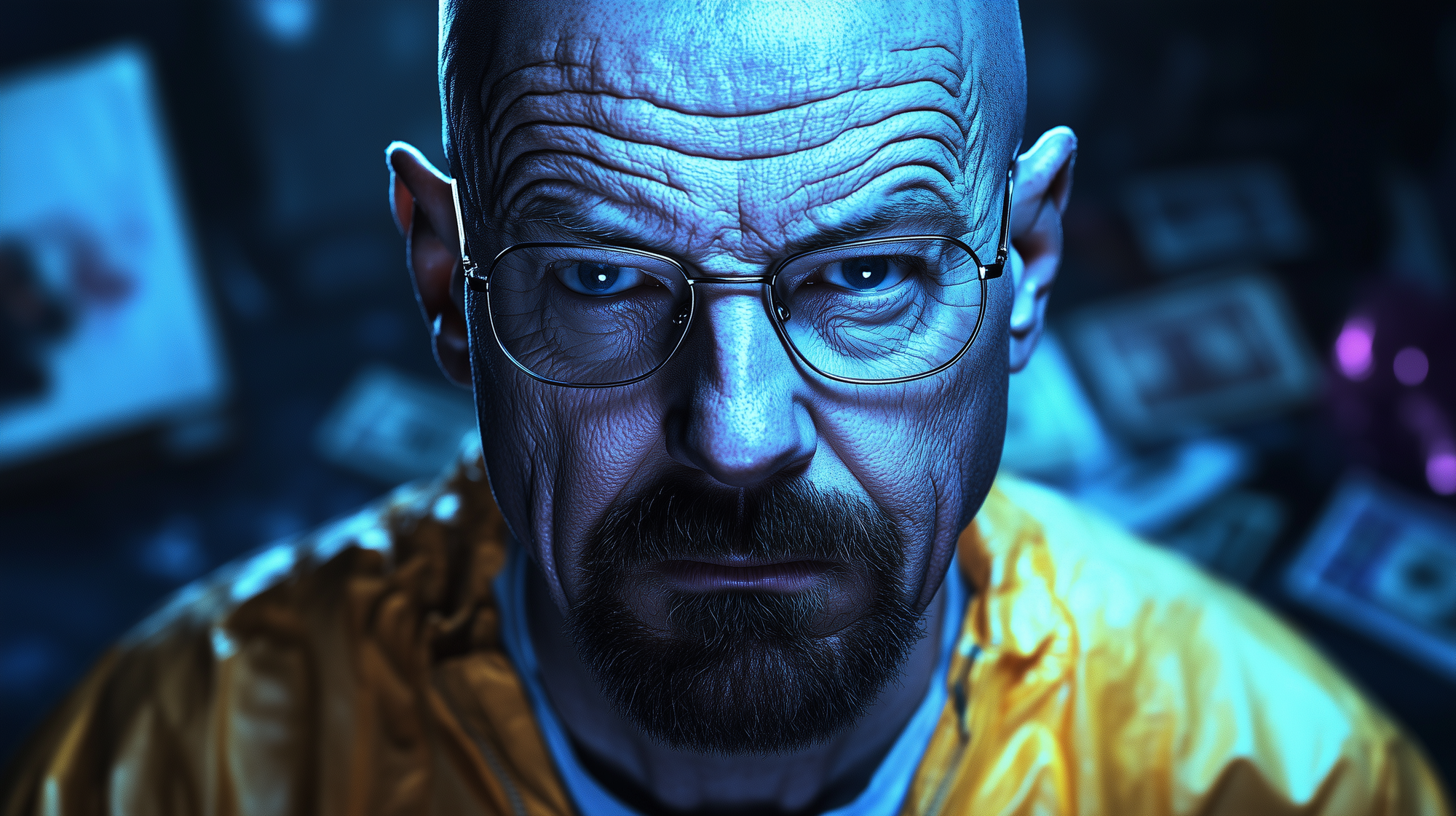
Conclusion
The fusion of traditional CTI and dark web monitoring not only enhances our ability to defend against cyber threats but also fundamentally redefines the nature of cyber defense. This integration moves beyond simply combining tools or methods; it represents a philosophical shift in how we approach the complexities of cyber security.
The Wire teaches us the true depth of understanding comes from seeing the connections within a system, recognizing every event is part of a larger narrative shaping the whole. This systemic view allows us to predict, analyze, and address threats in ways deeply informed by the broader context in which they occur.
Breaking Bad, on the other hand, reminds us of the critical importance of immediacy and focus. In a world where a single moment’s decision can have far-reaching consequences, the ability to act quickly and decisively is paramount. Dark web monitoring embodies this principle, providing real-time intelligence both precise and actionable, enabling us to confront threats before they can fully manifest.
"The moral of the story is: I chose a half measure when I should have gone all the way."
— Mike Ehrmantraut
When we bring these two perspectives together, we create a defense strategy as much about understanding the broader, interconnected landscape as it is about responding to the immediate challenges within it. This approach compels us to think differently about cyber security — not just as a series of isolated incidents to be managed, but as a dynamic and ever-evolving story in which we must remain vigilant, informed, and prepared.
This synthesis pushes us to adopt a more holistic view, one recognizing the value of both deep, systemic insight and rapid, tactical response. It is through this dual lens we can best navigate the complexities of modern cyber threats, ensuring we are not merely reacting to the world around us, but actively shaping our defense in a way anticipating and neutralizing dangers before they take hold. In this fusion, we find not just a new approach, but a new understanding of what it means to protect the digital world.
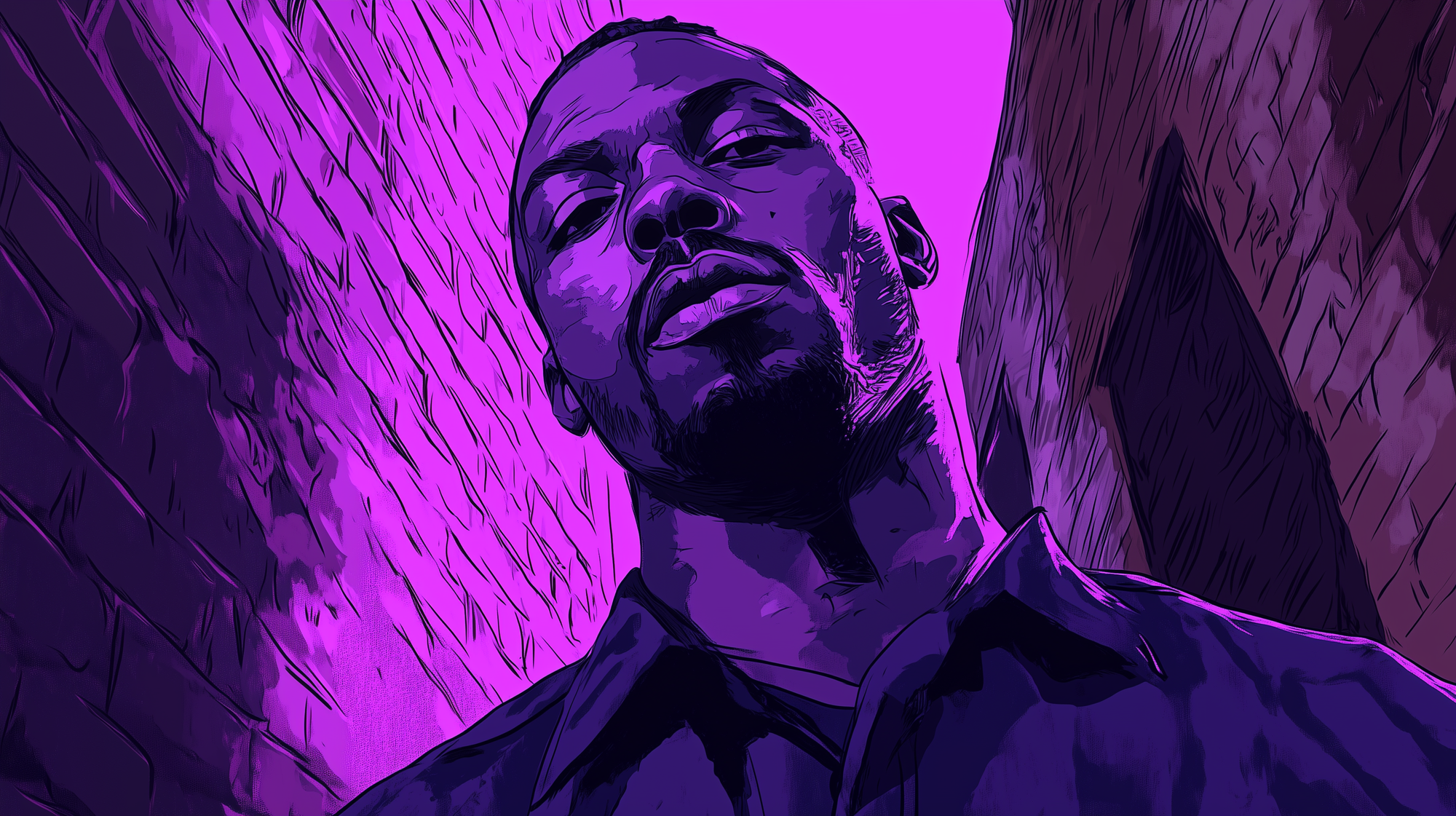
Reflecting on The Wire, we are reminded of Omar Little’s profound observation, “you come at the king, you best not miss.” This underscores the necessity of precision and thoroughness in our strategies. There is no room for error when dealing with sophisticated adversaries. Meanwhile, Walter White’s reflection in Breaking Bad, “I did it for me. I liked it. I was good at it. And I was really... I was alive.” captures the intensity and immediacy required to confront threats head-on.
Together, these perspectives remind us cyber security success lies in both the depth of our understanding and the sharpness of our actions, ensuring we not only defend but also dominate this complex digital battlefield.
If you have journeyed through this entire 3300+ word exploration, I commend your perseverance and engagement. While comparing The Wire and Breaking Bad to CTI may initially seem unconventional, I firmly believe this metaphor serves as a clear and effective framework for understanding the complexities of CTI and dark web monitoring. Just as audiences passionately debate which of these iconic series stands as the pinnacle of television drama, so too do people often draw sharp distinctions between the merits of traditional CTI and dark web monitoring, especially those who lack actual real-world practitioner experience.
As we conclude this extensive discussion, allow me to assert my conviction: The Wire stands as the superior show, with its profound depth and intricate storytelling. However, I also acknowledge and appreciate the brilliance of Breaking Bad and its significant impact on the landscape of television. We, as observers of this dynamic universe, are fortunate to have witnessed both series unfold their remarkable narratives.
Interpret this reflection as you wish, whether metaphorically or as a broader commentary on the importance of embracing diverse perspectives in our understanding of complex systems.
